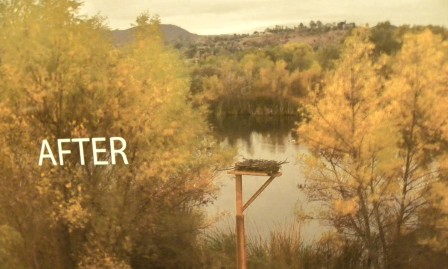Lakeside’s River Park Conservancy
Another Step in Restoring the Environment
In November, Mission Hills Garden Club learned a great deal about Lakeside’s River Park Conservancy. Cindy Collins gave us a bit of its history and described their various projects and how they sustain them.
Their mission is “to preserve and restore the biological integrity and beauty of the San Diego River while integrating recreational, educational, and cultural opportunities for youth, seniors, families, and citizens of East San Diego County.” Their goals are to restore the land along the San Diego River between El Cap and Santee, to support the San Diego River Trail and its recreation facilities, and to support research and education as well as improve water quality through natural filtration systems. The conservancy is part of 50 community-based conservancies working to preserve and restore 52 miles of the San Diego River from Julian to the Pacific Ocean and 400 square miles of watershed.
Collins showed us photographs from before the conservancy began its work. Prior to restoration efforts in 2005, the surrounding sand mines had rendered the river banks and nearby terrain barren One can see the difference the restoration has made by comparing it to an area still used for sand mining. Instead of the newly restored native plants which include willow, mule fat, sage, monkey flower, California lilac, toyon, and laurel sumac, the sand mining area is home to non-native invasive mustard. Part of the restoration came from removing over 14 tons of weeds, mostly invasive arundo, and gradually thinning the oily eucalyptus allowing native oaks and sycamores to mature. They also removed over 600 yards of fill from the sand pits. Cottonwoods and willows appeared as soon as the fill was removed.
The open portion of the Trail welcomes hikers, runners, bicyclists, dogs on leashes, horses, and many of our threatened and endangered birds. The terrain is fairly flat making it accessible to the handicapped.
Along the river flooding was common; a big flood took place in 1993 and another in December of 2010. Widening the river allows more water to flow which helps prevent floods.
Another area being restored is Hansen El Monte Pond. This project is a cooperative effort with the land‘s owner, the Endangered Habitats Conservancy, the San Diego River Conservancy, San Diego County Department of
Water Resources and Cal Trans.
They are working to restore 145 acres on which a 60 acre left-over sand mining pond sits. This project will connect the pond to the San Diego River, creating a storage basin for floodwaters to expand thus protecting the acreage downstream from flooding. It will also create 20 acres of wetland to attract birds. The necessary studies and permit processes will take a year; then the project will begin. Once the site is complete, the wild flora and fauna should return in two or three years.
The restoration is also improving water quality. The old concrete channel increased the alkaline level of the water, thus reducing the numbers of birds and bugs. The conservancy’s efforts to rectify this were successful. Initially the water was too warm, too salty, and too muddy for fish to flourish. Now the water flows through bulrushes and cattails which filter it naturally. Robin Rierden, executive director, said that these plants are capable of removing up to ninety per cent of water impurities.
A very important undertaking is the Arundo Control Project. Arundo was the fuel that fed the 2003 Cedar fire. By providing free arundo removal, the conservancy helps control wild fires while providing a more welcoming environment for native plants and birds. The conservancy hopes to lure birds with the nest boxes they have built and installed for the western bluebirds. An osprey platform was installed to encourage the fishing osprey to nest and rear young, and an owl box awaits barn owl tenants.
So far the Conservancy has restored 100 acres of riverbed. The trail extension was completed in November of last year. The conservancy, in its fourth year of an Education Program Series, is working with the East County schools; currently 2500 students serve in the River Keeper Program. The conservancy will soon have a San Diego River Field Station for Lakeside for research in the San Diego River watershed. The Community Education Program gives tours of bugs, insects and spiders; lectures on snake safety: on sustainable landscaping; on rainfall, erosion, water quality, and the hydrologic cycle. In addition, they the community can learn about bats (“Going Batty for Bats”) and about composting,
The Lakeside’s River Park Conservancy has grown and continues to grow. Each conservancy works with a host of other organizations as members of the San Diego River Coalition. They all rely on donations for survival. For more information, call or email them: (619) 297-7380 and info@sandiegoriver.org. Find out what you can do to help.
On February 26 Jim Bishop and Scott Borden will speak on aloes at the Mission Hills Church of Christ at 4070 Jackdaw between Fort Stockton and West Lewis from 6 until 8 p.m. They have traveled extensively and have photographs from all over the world. Bishop is a landscaper, and he and Borden have magnificent succulent gardens on their property. Come to learn about ways to have a dramatic hassle-free garden. Garden Club members are free; guests pay $10.00.
Category: Events, Local News








